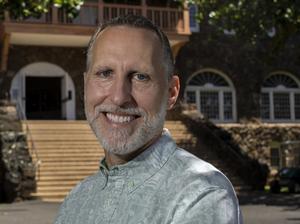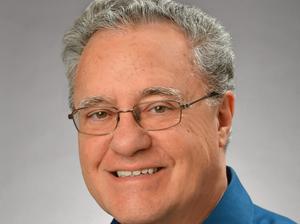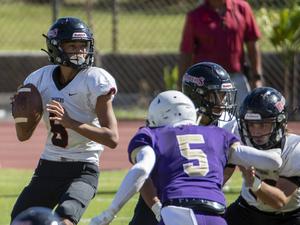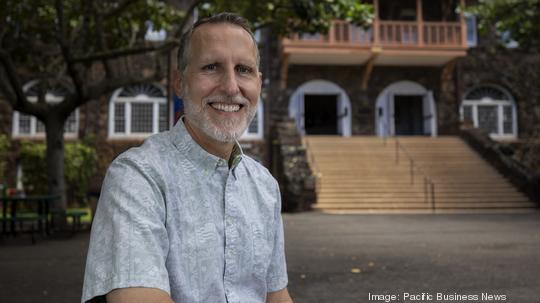
Mid-Pacific was born as a kind of business merger in 1908 when Mary and Francis Damon brought together students from the Kawaiahao Seminary for Hawaiian girls, Mills Institute for Chinese Boys, The Okumura Japanese Boarding School, and the Korean Methodist School for Boys and Girls. It hasn’t stopped innovating since.
“We like to think of ourselves as a 113-year-old startup,” said Mid-Pacific President Paul Turnbull.
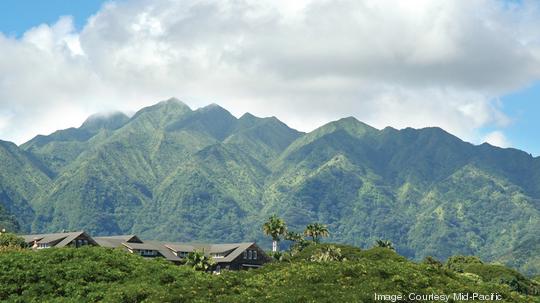
The pace of the innovation has been accelerated as the school and its 1,538 students, from preschool to 12th grade, adapted to imposition of Covid policies that needed immediate action. Through the previous school year, which ended in May, Mid-Pacific brought back students to the campus in cohorts, starting with youngest first.
“Twelve months ago, we opened in a hybrid environment where we had our Kindergarten and preschool students on campus right from the first day, for obvious reasons,” said Turnbull. “Virtual learning is just really hard the smaller you are and it puts a huge burden on not only the teachers but the parents, as well.”
Over a span of weeks, they brought back increasingly older cohorts until everyone was back on campus. “This year we started with everyone on campus and I like to remind people that masks are not going to hold back your smile. For the past couple of weeks, seeing the children, hearing them laugh, it’s been a great time to be back.”
As a board member with the Hawaii Association of Independent Schools, Turnbull was involved in industrywide discussions with member schools on how best to operate. Last year, schools moved largely in lockstep in terms of health protocols, but this school year so far has them operating more traditionally: Each school is finding its own way, within the limits of government requirements, to deliver their brand of educational experience while offering the safety people are looking for. How that plays out varies, in part, based on resources. Larger schools can offer weekly Covid testing, for example, or may be less restrictive about requiring masks for older students outdoors.
Operationally, quickly adopting a hybrid virtual-school model, then bringing everyone back on campus was fairly easy for Mid-Pacific, thanks to years of investment in technology that had been integrated from preschool up to 12th grade. But it was not without expense; Turnbull said there were one-time Covid outlays of $1 million to hire more people in order to reduce class sizes and another $1 million on the facilities, including a range of expenses from small things like signs and sanitizer to reshaping spaces.
On the bright side, the community rallied to support the institution. “We beat our annual funding goal heartily last year and we’re so thankful to our donor base,” Turnbull said. “A lot of that came in the form of financial aid for families disproportionately represented in the tourism industry and all the associated businesses that benefit from tourism; so in that sense, we’ve done really well.”
What he’s observed of the industry is that, through Covid, smaller independent schools benefited in terms of enrollment immediately when the state Department of Education closed its schools and struggled to quickly switch to virtual instruction. Larger schools saw some of that effect, too, though for Mid-Pacific, enrollment actually declined last year as families either left the school or left the Islands entirely. For those that did see the uptick, “The question will be, in two years, did those enrolling families become a cohort that stays all the way in the system?” he said.
Turnbull has been looking ahead quite a bit. While the temptation for many businesses through this period of rapid Covid policy changes might be to take things day by day, strategic planning, he said, is actually essential.
“The general advice is don’t embark on strategic planning during a crisis and a pandemic stretching over three school years qualifies as a crisis,” he said. “But if we don’t look 10 years into the future, we’ll be in crisis 2.0 and that’s not what anybody on my campus deserves, so I see it as my responsibility as to look through the fog as much as is humanly possible and get us ready for the horizon, because it’s going to come.”
On that horizon? Things all of education – public and private – will have to deal with.
The first is demographic. A year-plus of work from home, contrary to early predictions, did not produce a baby boom but a baby bust, given the social and economic anxiety of Covid, lockdowns and unemployment. If one byproduct is preschool for 5-year-olds, 2025 is going to be a tough year of fewer customers. But that’s an acute bend in a curve Turnbull has been watching trend downward for some time.
“The idea of smaller classes in the future is something we’ve been planning for,” he said. “Hawaii’s outward migration is part of that, but also, from a macrodemographic standpoint large generations give birth to small generations.”
The large cohort of Baby Boomers had the comparatively small Generation X, while the Millennials, at one-and-a-half times the size of the Baby Boomers, are delaying family formation and having fewer children. The potential market for education will change.
An even bigger change Mid-Pacific is planning for, and that the industry will grapple with, is that the 20th century model of workforce development, conveying children into the middle class in assembly line-like fashion from high school to college to work, is over. College has become exorbitantly expensive and at the same time, he said, major Fortune 500 companies like Apple and Google are offering alternatives to college with their own in-house “universities.” He likens it in some ways to the past, recalling the apprenticeship certificate his great-grandfather earned at 15 to design and craft surgical instruments.
Preparing children for such a future, at Mid-Pacific, has meant preparing them for new paths to productive self-sufficiency. About seven years ago, it launched an in-house start-up incubator in which high school students form real LLCs. The program has been so successful that it was taken out of its original silo and integrated more widely throughout the school.
Another way that Mid-Pacific has been future-proofing not only its students and itself, but the entire industry, is through its Kupu Hou Academy — essentially, summer school for teachers and welcome to all.
“We now bring in 300 teachers per summer — that’s DOE teachers, charter school teachers and private school teachers — to teach the deeper learning methods that we’re known for. That’s something we’re looking to greatly expand in the next few years,” Turnbull said.
